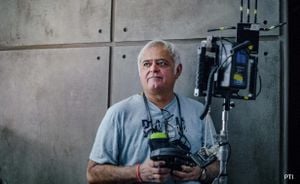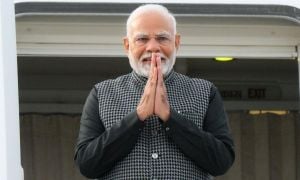NEW YORK— A highly publicized trial involving former Marine Daniel Penny has drawn to a close as the defense rests, marking another significant moment in the case surrounding the death of Jordan Neely, who died during a subway encounter last year. After four days filled with witness testimonies, the defense concluded without calling Penny to take the stand, leading to heightened anticipation as the jury prepares to deliberate over the holiday weekend.
Penny is facing serious charges, including second-degree manslaughter and criminally negligent homicide, stemming from the May 2023 incident on the New York City subway. According to witnesses, Neely, who had been behaving erratically on the train, was placed in a chokehold by Penny for several minutes, leading to his eventual death. This case has sparked intense discussions about public safety, mental health, and the use of force.
The trial has seen extensive testimonies from various individuals present during the incident. On Friday, the prosecution concluded its case, asserting Penny's chokehold resulted in Neely's death. They argued his actions exceeded reasonable measures of self-defense and safety, as Neely posed no immediate threat.
Key to the prosecution's argument was the testimony of Dr. Cynthia Harris, the medical examiner who performed Neely's autopsy. Harris testified Neely's death was caused by "asphyxial death" due to the chokehold, stating, "the consensus was unanimous" among her colleagues at the medical examiner’s office. She strongly dismissed alternative explanations for Neely's death, emphasizing the role of Penny's chokehold.
Contrarily, the defense has focused its efforts on disputing the cause of Neely’s death, centering their case around the findings of Dr. Satish Chundru, the forensic pathologist they enlisted. Chundru claimed Neely's death resulted from multiple factors, including his mental health challenges, substance use, and underlying health conditions, rather than from Penny’s actions. He stated there was no definitive evidence linking the chokehold as the singular cause of death.
During cross-examination, the prosecution aimed to discredit Chundru’s credibility, questioning his divergence from established medical opinions. Chundru's perspective, namely the alleged involvements of schizophrenia and synthetic cannabinoids found in Neely's system, was met with skepticism by the prosecution. They highlighted the inconsistencies within his testimonies compared to other medical authorities and previous cases.
Video footage of the incident has also formed a central point of discussion. Eyewitness accounts describe Neely’s behavior as increasingly erratic on the day of his death—yelling about being hungry and threats of impending harm, which many interpreted as alarming. From Penny's perspective, he claimed he was merely trying to protect himself and others on the train. Supporting this, Penny's defense attorneys presented character witnesses, including family and friends, who portrayed him as empathetic and well-intentioned.
Throughout the trial, the contrasting narratives have positioned Penny variously as either a defender acting out of necessity or as a vigilante exceeding his bounds. The defense's closing arguments are expected to reiterate Penny's intentions, emphasizing his military training and his perceived need to intervene during what they describe as Neely's aggressive behavior.
The jury must now reflect on these conflicting testimonies and determine whether Penny's actions constituted justifiable self-defense or crossed the line from restraint to recklessness. This case doesn't merely hinge on the individual actors involved; it also amplifies larger societal issues around mental health management, public safety, and interpersonal conflict resolution.
After Thanksgiving, the jury will return for closing arguments, where they're likely to wrestle with complex legal definitions surrounding justifiable force, self-defense, and the nuances of mental health encounters. The stakes are high, with the possibility of significant prison time looming if Penny is convicted.
Public sentiment remains divided — some lauding Penny as a hero for stepping up and intervening during what they perceive as dangerous behavior, whereas others see him as emblematic of larger systemic failures to address mental health crises compassionately. Neely's family and advocates have expressed vehement calls for justice, reinforcing their belief Penny acted with excessive and unjustifiable force.
With legal proceedings set to resume shortly, the outcome of this trial is poised to not only impact those directly involved but could also infuse the discourse on citizen intervention and the ethics surrounding public safety measures, potentially influencing laws and societal attitudes moving forward.
Considering the range of experiences and emotions tied to this incident, the upcoming jury deliberation promises to be more than just about penalties and charges—it will encapsulate impressions about humanity, judicial fairness, and our collective values. What remains clear is the fact this case will continue to resonate throughout New York and beyond, symbolizing the points where societal issues converge with the law.



